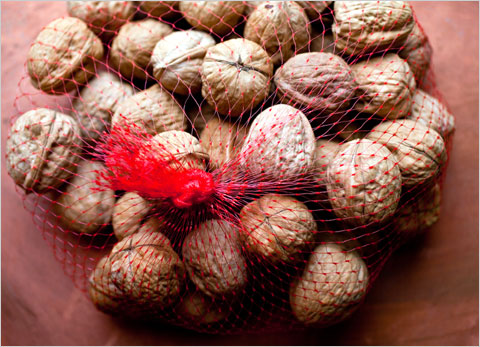Dr. Weeks’ Comment: the Doctrine of Signatures (the shape of the plant/leaf/nut suggested the organ correlation and therefore the medicinal purpose) had the ancients eating walnuts for brain health (can you see it?). We love them for their jam-packed nutrient load – oils minerals and enzymes. Get ’em organic though and don’t eat them dry roasted (that destroys the beneficial vitamins and makes the oils rancid).
Walnuts: The Original Health Nut
By Tara Parker-Pope
 Andrew Scrivani for The New York Times Crack open the health benefits of walnuts.
Andrew Scrivani for The New York Times Crack open the health benefits of walnuts.
The walnut is a surprisingly underrated health food. Studies show regular walnut consumption is associated with lowering bad cholesterol, raising good cholesterol and lowering risk for heart disease. In animal studies, walnuts have even been associated with slowing breast cancer growth.
Walnuts are unique among nuts because they are the only nut to contain large amounts of alpha-linolenic acid, one of the two major types of omega-3 fatty acids. (Other sources of alpha-linolenic acid are soybean, canola and flaxseed oil as well as some green vegetables like brussels sprouts and kale.)
This week, Recipes for Health author Martha Rose Shulman offers five new ways to add walnuts to your meals.
Bulgarian Cucumber Soup With Walnuts: This yogurt-based soup can be made several hours before serving.
Pasta With Walnut Sauce and Broccoli Raab: A creamy pasta sauce made with walnuts, ricotta and Parmesan.
Endive, Apple and Walnut Salad: This classic French combination makes a wonderful salad for cool weather.
Turkish Tarator Sauce With Beets and Beet Greens: This walnut, garlic and yogurt sauce is great with beets or other cooked vegetables.
Quick Walnut Bread: Serve plain, toasted or sliced thin with cheese.

